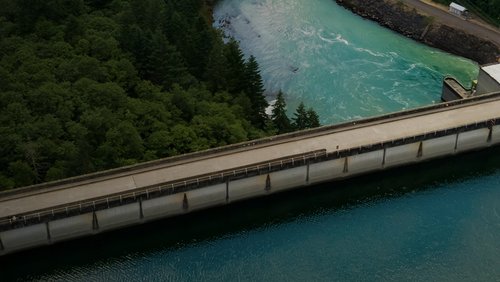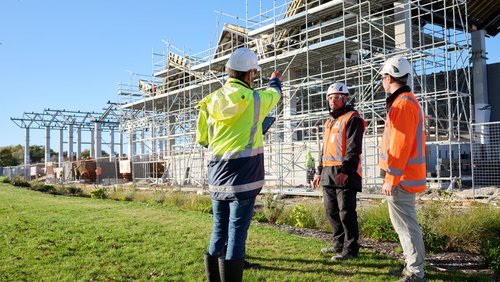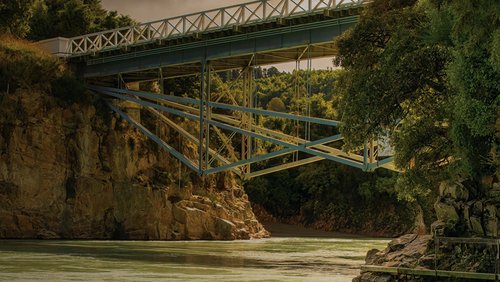26 Jul 2024
What does it mean in practice to incorporate Te Ao Māori into engineering?
I have been working with the Pou Ārahi (Māori Advisors) and Stantec’s Water Resources leadership team on how to better integrate Te Ao Māori within our work. As an engineer with whakapapa to Kāti Mamoe, Kāi Tahu and Waitaha, this gives me an understanding of both worlds. But it does not mean it makes this easy. In many ways, we are all at the early stages of finding better ways of doing this.
In February, Te Ao Rangahau released the Kimihia Rangahaua strategy with the goal of embedding Te Ao Māori into the organisation and the engineering profession. This follows a formal recognition in 2019 of Te Tiriti o Waitangi and commitment to promoting principles of partnership, protection and participation.
The recognition of Te Tiriti and Te Ao Māori is the foundation for significant change occurring across many organisations and within recent legislation. In particular Te Mana o te Taiao (Aotearoa New Zealand Biodiversity Strategy 2020) and the National Policy Statement for Freshwater Management 2020 (NPSFM). Even with current and proposed changes coming from the Government, the principles of this change will continue. There is growing momentum in the willingness to find meaningful ways to meet the obligations of Te Tiriti and better incorporate Te Ao Māori into the work we do.
The challenge for those who work in engineering is how to turn the words and meaning behind the strategy into tangible and meaningful outcomes within our practice. This is a much bigger hurdle than those we face due to common changes, like changes to regulations. Instead, it requires a more holistic shift in our thinking and approach to our projects.
I work in the water sector where the fundamental concept of the NPSFM is Te Mana o te Wai. This acts as a framework for the integration of Te Ao Māori into water engineering projects, though many of these processes can apply to any sector. It provides an approach to lift the health of natural water environments and cultural values linked to it.
Engagement with mana whenua and māturanga Māori
Engagement with mana whenua is the first step, where we begin the process of understanding mātauranga Māori (Māori knowledge originating from ancestors, including world view, values, creativity and cultural practices) as it relates to the project and surrounding area.
Mātauranga Māori can only be provided by mana whenua. By building a relationship based upon respect and trust, we have the opportunity to listen to mana whenua and thus grow our understanding.
Often, engagement processes with mana whenua are undertaken by the client, project managers and planners. Integrating the varied and complex mātuaranga Māori that comes out of this engagement into the project is a challenging process, and the engineers are central to this being successful. Therefore, it is very important that engineers engage directly with mana whenua throughout all stages of a project so we can collaboratively develop meaningful solutions that achieve the outcomes required.
… it requires a more holistic shift in our thinking and approach to our projects.
Iwi as a partner not a stakeholder
Iwi have often been viewed as a stakeholder, meaning they get informed of our plans and their feedback is used to consider how we can account for their values. However, Te Tiriti is about partnership. Through legislation such as the Resource Management Act and NPSFM, there has been growing recognition of iwi as a partner. This approach is fundamental to successfully integrating Te Ao Māori into a project. Māori have significant contribution to make as kaitiaki (guardians) of our natural world.
Integrating mātauranga Māori with Western engineering
Engineers, by nature and training, are used to immediately considering solutions to problems. This approach is very focused on the technical and economic issues and led by principles of engineering practice and experience from other projects. Integrating Te Ao Māori into a project requires a change in approach. In the first stage of a project, we must develop an understanding of the issues. This is the time for listening, asking questions and digging into the environmental, cultural and social elements of the project. In turn, this enables engineers to approach the project not just with our existing technical knowledge and skills, but considering ways we can include mātauranga Māori in the processes and outcomes of the work we undertake.
There are many challenges mana whenua face in the resourcing, gathering of mātauranga, and understanding of engineering processes. Engineers can play a key role in helping mana whenua better understand engineering processes so together the links to mātauranga Māori can be strengthened.
The integration of Te Ao Māori with Western engineering is what we are trying to achieve, but how do we do it? Each instance will be highly specific to the project and mana whenua values. Engineering innovation is often necessary to find a solution that meets the needs of these two world views. This challenge excites me – after all, solving problems is a big part of our purpose as engineers.
An engineering example
I will use the general design and construction processes of a culvert as an example of how mātauranga Māori can be integrated and thereby contribute to a better outcome.
In the past, most culverts have been designed using engineering knowledge of hydrology and hydraulics with a focus on flood flow conditions. This approach results in the barriers to fish passage for at least some species, plus other impacts on streams such as processes of sediment transport. For this sort of project, a common value among different mana whenua is their preference for options that keep the natural form of a stream, improving the mauri (life forces) of the wai (water) and lifting the health of the stream from both a cultural and ecological perspective. Mana whenua would prefer to see daylighting of the stream (bridge), but if a culvert is included it should be large enough, with the invert deep, so that natural materials form the bed. The cultural explanation of this approach is multifaceted but includes the importance of wai being linked to the sky above and the whenua (land) surrounding.
The New Zealand Fish Passage Guidelines 2018 have a very similar approach and highlight how the two different world views can have very similar environmental values.
For Māori, this lift in the health of the wai is bringing back the mauri. In Western science, this might be explained as the balance of sediment transport, nutrients, and passage of fish and other aquatic species. Though this is correct, the mauri also speaks to the wider concept of cultural health.
The mātauranga Māori for the site may have other values to be accounted for, perhaps related to the historical use of the stream, or importance of the whenua. Improving the link mana whenua have with the wai by restoring access will be another common value. This relates to the identity Māori have, which is linked to the wai and relates to the concept of ko wai mātou (we are water) as well as waiora – the holistic health of the people. Engineering solutions that restore those values are not only meeting the needs of the project but also have the opportunity to lift the health of the wai and mana whenua.
Paul Morgan FEngNZ CPEng is Technical Leader, Water Resources at Stantec New Zealand.
Find out more about Engineering New Zealand Te Ao Rangahau’s journey to embrace Te Ao Māori into the engineering profession
This article was first published in the June 2024 issue of EG magazine.




